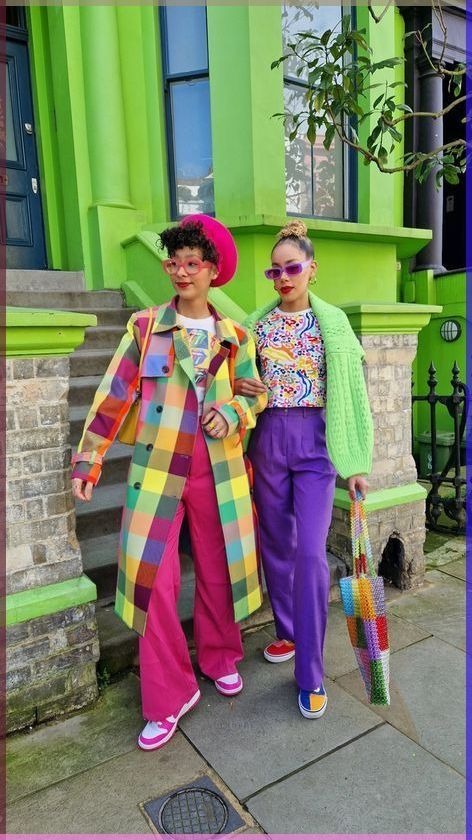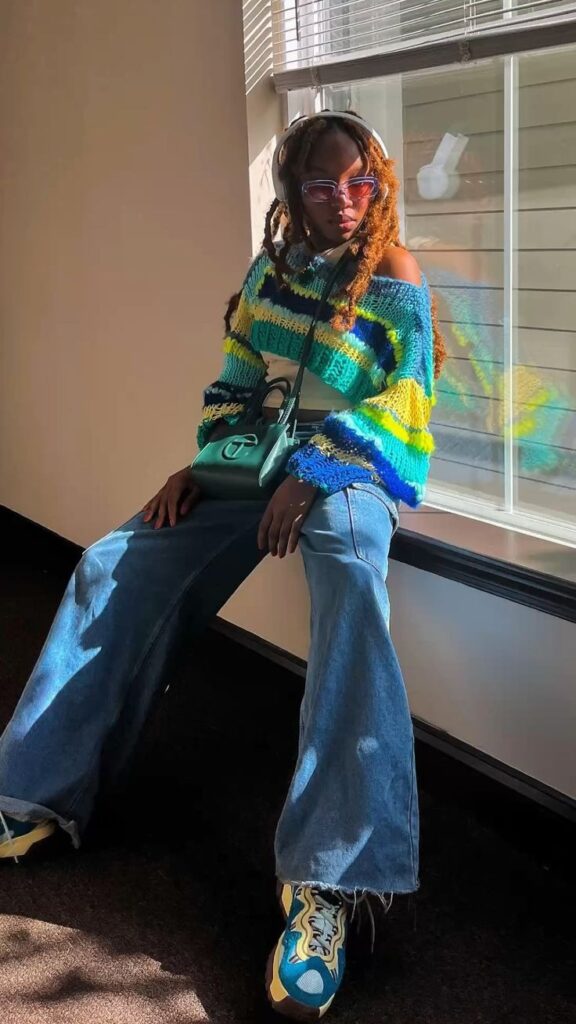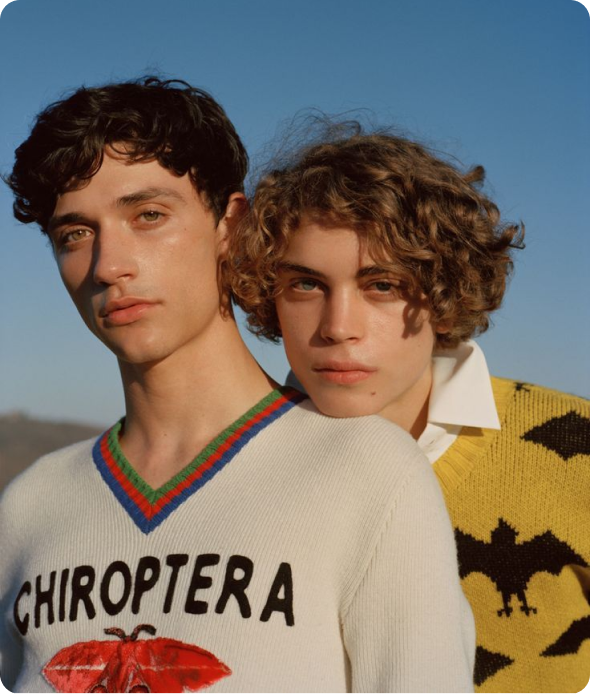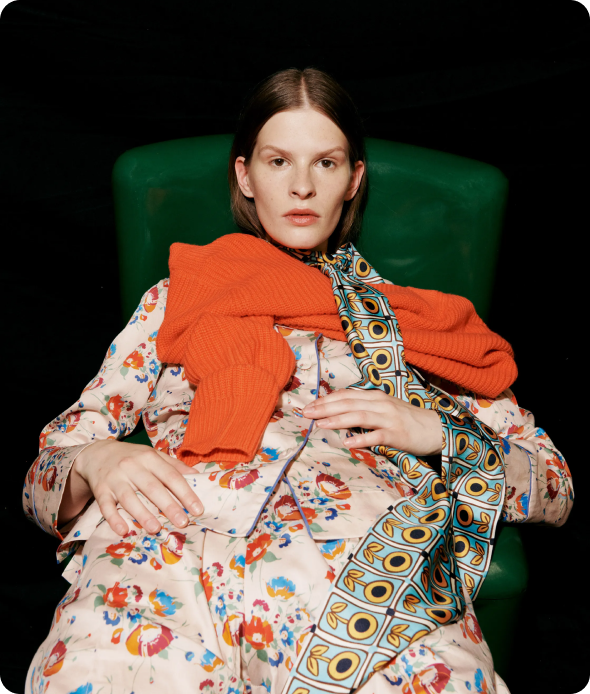MINIMALISM VS. MAXIMALISM: GEN Z’S LOVE FOR BOLD,CONFIDENT FASHION CHOICES
When it comes to fashion, Gen Z knows no boundaries. They are redefining what it means to express themselves through their style. While their tastes are diverse, two major trends stand out: minimalism and maximalism. These two aesthetics couldn’t be more different, yet both reflect the confident, unapologetic spirit of Gen Z. Whether you’re all about clean, simple lines or love to make a bold statement with prints and accessories, there’s space for everyone in Gen Z fashion.

Minimalism: Clean, Simple, and Timeless
Minimalism is all about stripping away the excess and focusing on the essentials. This style thrives on neutral tones, sleek silhouettes, and simplicity. Think of outfits made up of well-fitted basics like plain t-shirts, high-waisted jeans, and minimalist accessories.
Minimalist fashion appeals to those who believe less is more, focusing on quality pieces that stand the test of time. It’s often perceived as sustainable because it emphasizes longevity, but minimalism isn’t inherently eco-conscious. Many minimalist designs come from fast-fashion brands that might not follow ethical or sustainable practices. So, while the minimalist aesthetic encourages intentional shopping and avoiding excess, it doesn’t automatically mean eco-friendly choices are being made.
Popular minimalist pieces include monochromatic sets, structured blazers, and sleek streetwear fashion items that blend simplicity with utility. A pair of crisp, white sneakers paired with a tailored jacket can speak volumes without being loud. Minimalism’s appeal lies in its timelessness, the idea that a streamlined wardrobe can outlast trends and transitions, making it a strong statement in its own right.
Maximalism: Loud, Bold, and Unapologetic
On the other end of the spectrum is maximalism, a fashion trend that lives by the mantra “go big or go home.” Maximalism embraces bold prints, clashing colors, and extravagant accessories. It’s where creativity meets chaos, making it a perfect fit for Gen Z’s desire to break the rules and experiment with fashion.

Maximalists aren’t afraid of loud, graphic t-shirts, dramatic layers, or bold, eye-catching accessories that grab attention. From vibrant skirts with intricate details to bright-colored jackets and oversized sunglasses, maximalism is a celebration of individuality and self-expression. The more you mix and match, the better.
For Gen Z, maximalism is not just about being extra; it’s about being seen. It allows them to break free from traditional fashion norms and revel in creating something new. It’s not just about wearing clothes; it’s about telling a story with your wardrobe. Maximalism invites you to be playful, unapologetic, and to own your uniqueness, from bright patterns to textures that clash in all the right ways.
Why Both Work for Gen Z
What’s fascinating about these two opposing fashion trends is how they both appeal to Gen Z’s core values. Minimalism resonates with their desire for practicality and intentional shopping, while maximalism allows them to be bold, confident, and creative. Both styles provide avenues for expressing identity, though in very different ways.
Minimalism’s quiet strength lies in its ability to offer a versatile wardrobe with pieces that last. It’s perfect for those who want their fashion choices to feel polished without drawing attention. On the flip side, maximalism encourages fearlessness, pushing fashion boundaries and encouraging people to explore a wide range of aesthetics within a single outfit.
How Brands Can Reach a Wider Audience

Fashion brands have a unique opportunity to tap into both trends to expand their reach. By catering to both minimalists and maximalists, brands can appeal to a broader spectrum of consumers. Minimalism offers an elegant, timeless approach, while maximalism satisfies the demand for bold, individualistic pieces that stand out in a crowd.
Brands can create dual collections: one that features minimalist staples like neutral-toned suits, streamlined cuts, and clean, structured pieces; and another that explores maximalism with vibrant colors, oversized silhouettes, and statement accessories. This not only widens their appeal but also gives them a competitive edge in an evolving market.
Marketing plays a huge role here. Social media platforms like Instagram are essential for fashion brands to showcase how their products fit seamlessly into minimalist lifestyles or how they can be the perfect expression of maximalist creativity. By diversifying collections and targeting distinct fashion preferences, brands can build authentic connections and grow their audience.
Minimalism, Maximalism, and Sustainability
It’s important to differentiate between these trends and sustainability. Minimalism and maximalism are aesthetics, styles of dressing, and while both can incorporate sustainable practices, they don’t always. Sustainability is more about the process: ethical sourcing, production methods, and the long-term impact of fashion choices.
For brands looking to position themselves as sustainable, it’s crucial to highlight how their products are made, no matter which style they embrace. Whether it’s a minimalist piece made from organic cotton or a maximalist design crafted with eco-friendly dyes, the focus should be on transparency in production and the environmental footprint of each product.
White Label’s Role in Expanding Your Brand
For fashion brands, especially emerging ones, White Label provides a powerful platform to reach a diverse audience and showcase unique designs. Whether your brand caters to minimalists who love clean, timeless fashion or maximalists who embrace bold self-expression, White Label offers the ideal space to connect with fashion-forward customers.
White Label eliminates the need for an independent e-commerce platform, allowing designers to focus on what they do best: creating fashion. Through White Label, brands can scale, connect with a larger audience, and build a presence in both minimalist and maximalist fashion worlds.
In this vibrant fashion landscape, minimalism and maximalism both invite you to be authentic. Whether you gravitate towards the simplicity of a minimalist wardrobe or the exuberance of maximalism, remember that your style is a reflection of your individuality. With White Label behind you, reaching a broader, engaged audience has never been easier. So go ahead, curate your collection, mix and match, and let your designs speak for themselves.


